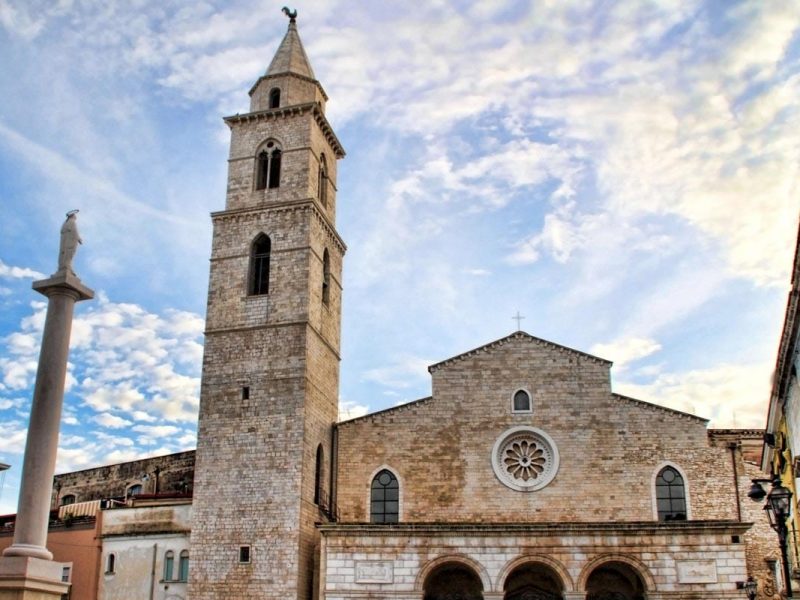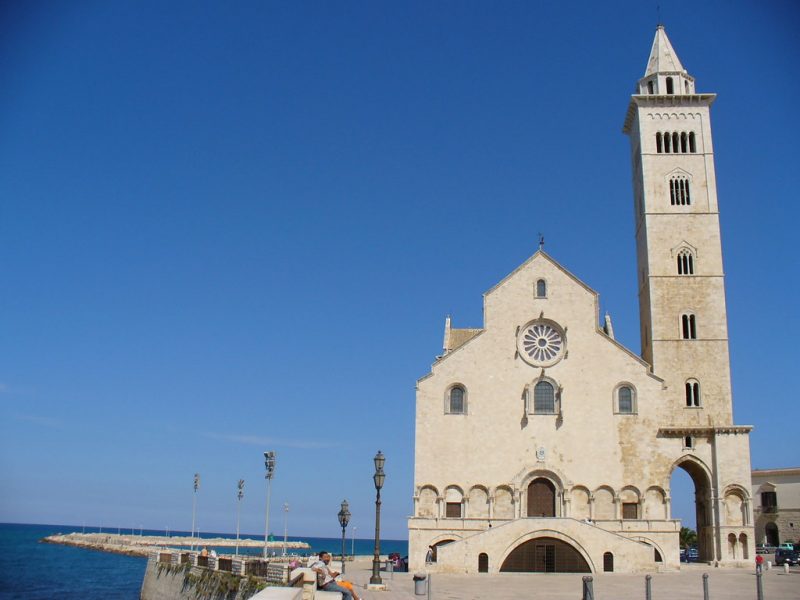The Borgo of Barletta
History. Culture. Local traditions.
Mix generously with the taste of fresh, grilled fish and a spectacular panorama of the sea, to be enjoyed in unlimited quantities as needed, for the guaranteed well-being of your soul.
Don’t forget a dash of mystery and a sprinkling of curiosity, to spice up and exalt the magic potion!
And here you have the recipe for Barletta, an enchanting borgo set between the Adriatic sea and the Ofanto river, where the atmosphere of the historical center is still enlivened by ancient traditional customs.
The Cathedral rises unexpectedly in the historical center, facing the sea and, in the distance, the Castle of Barletta, imperious and solemn as only the magnificent castles built by the Emperor Federico II can be.
You will have the urge to visit everything in one day, but you will soon discover that Barletta is a city to be savored in small doses, or risk becoming drunk on its timeless beauty!
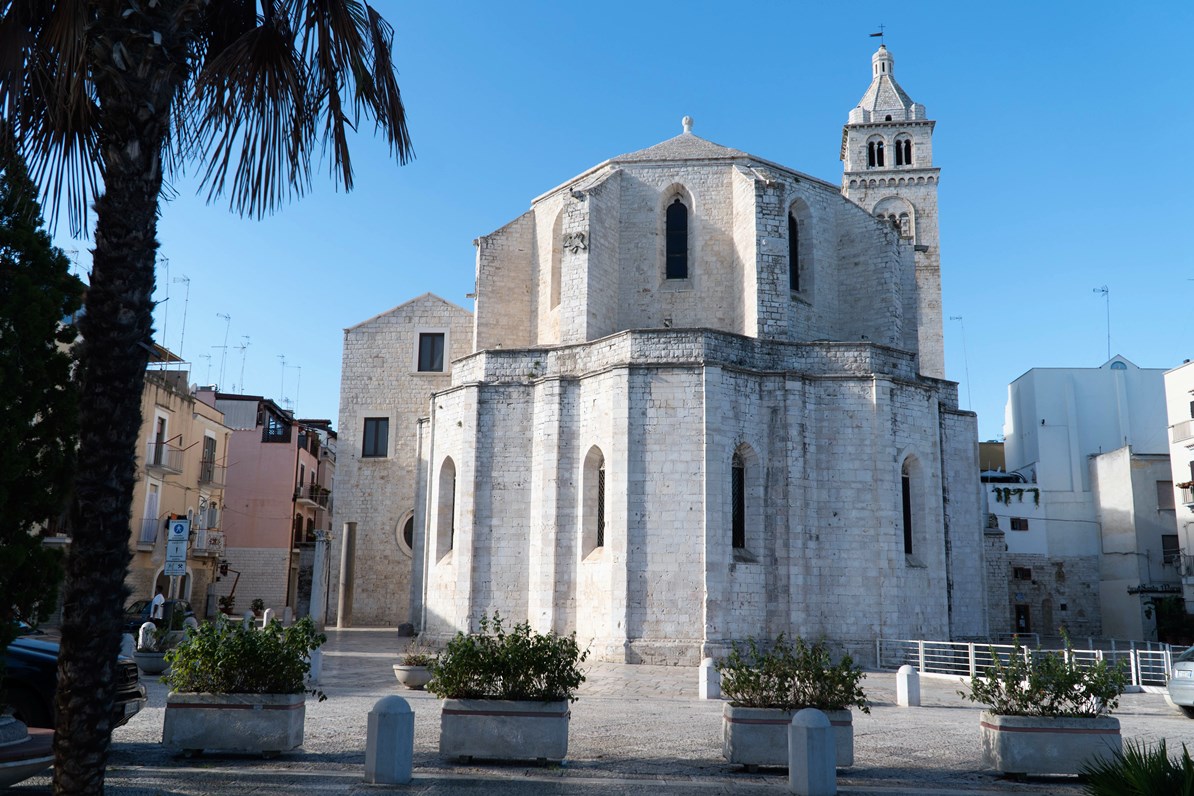
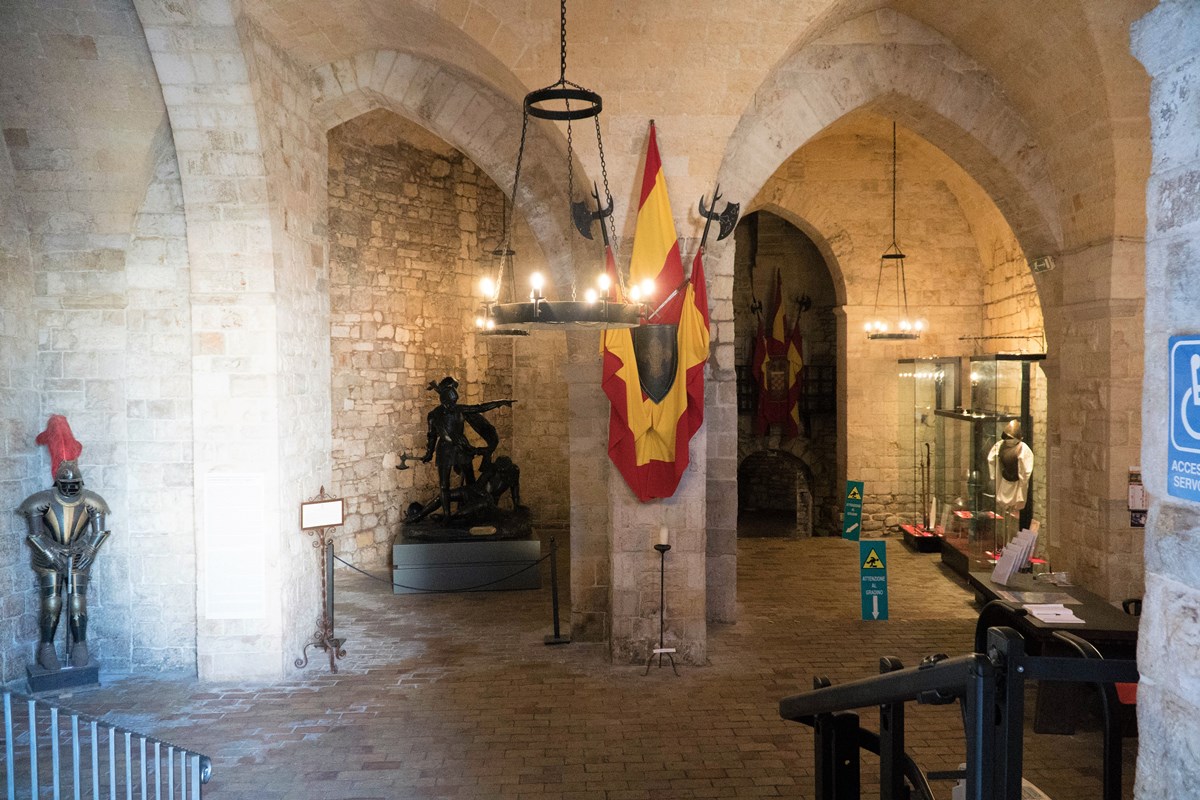
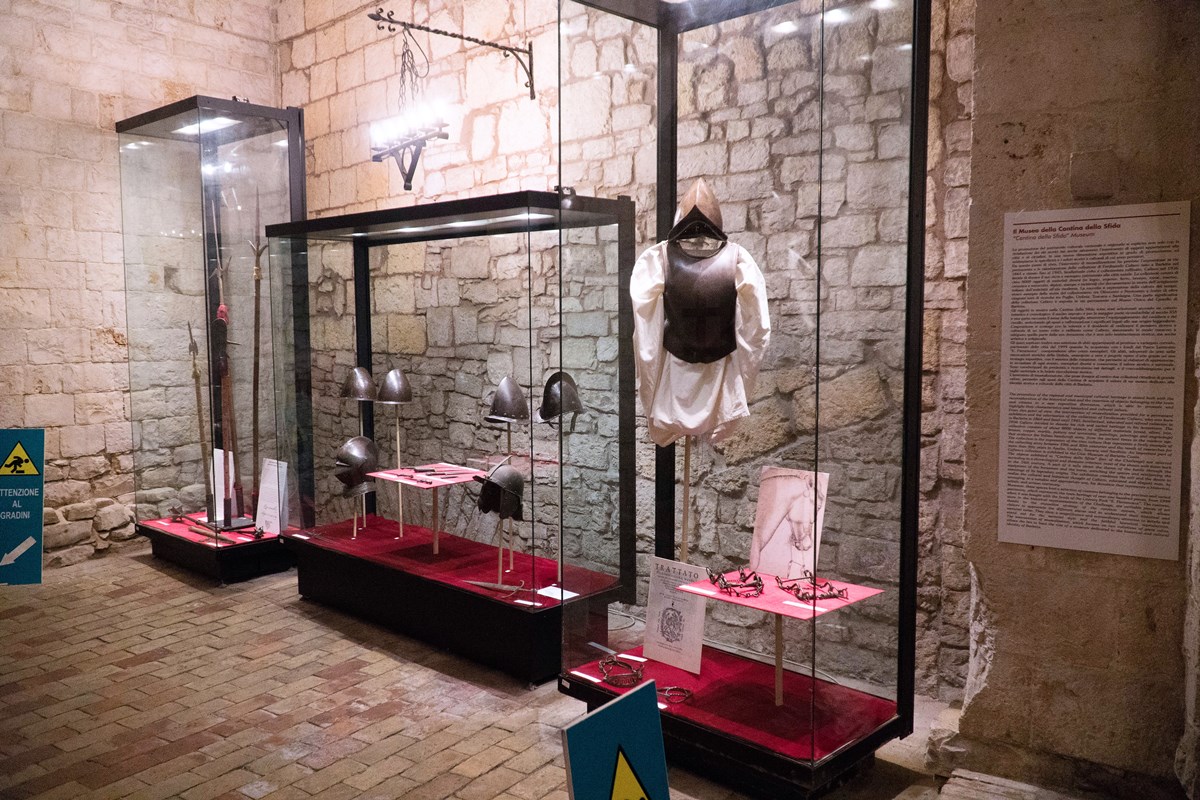
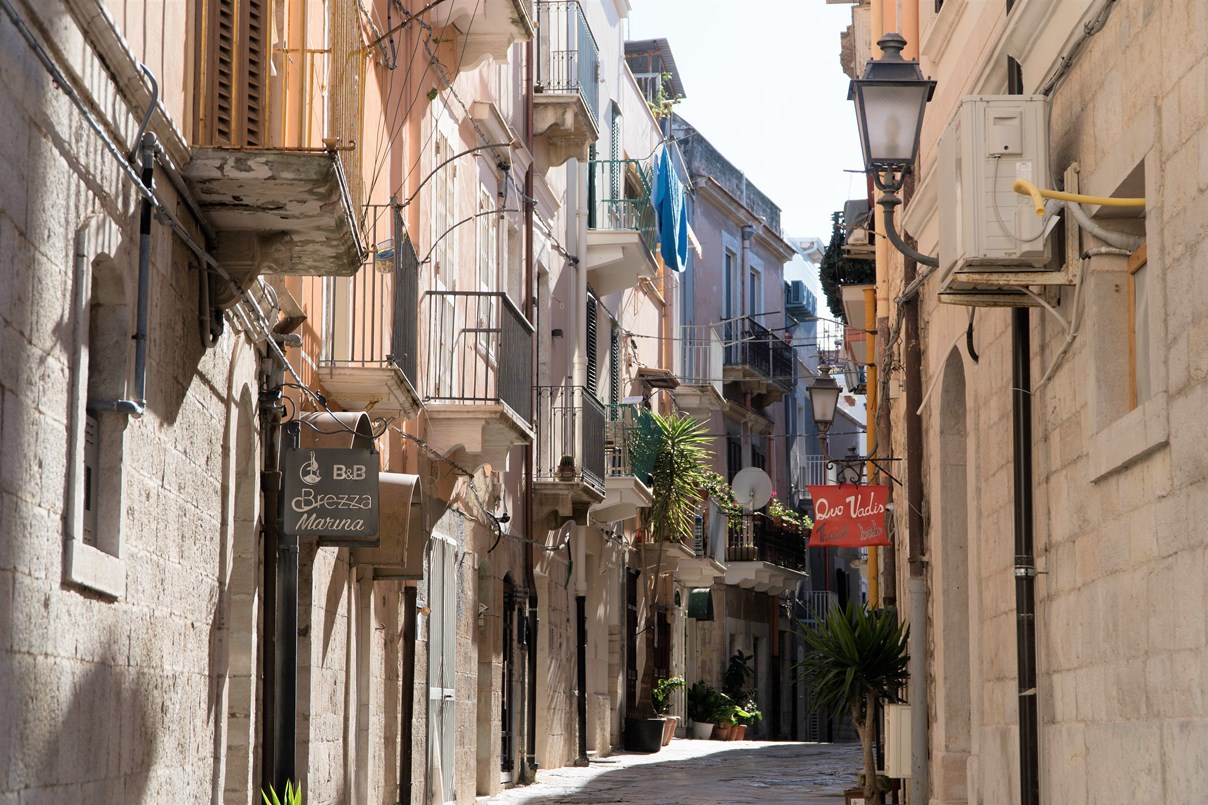
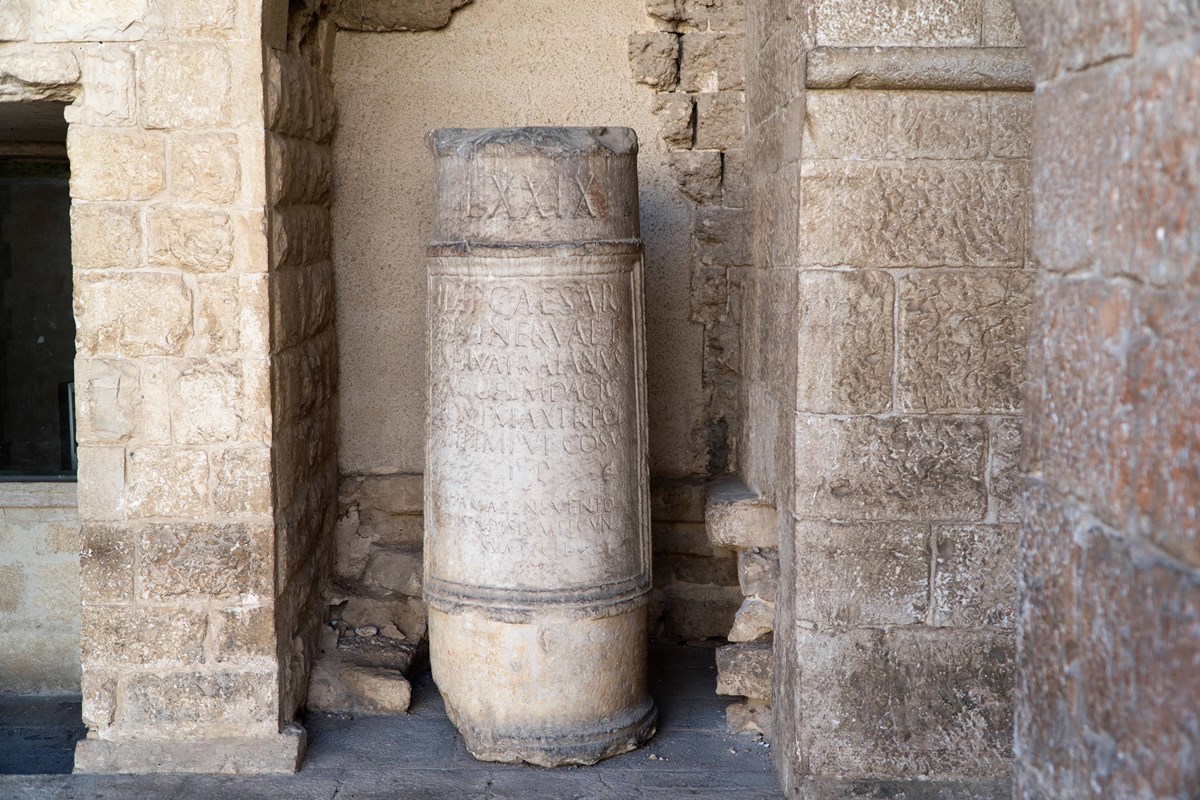
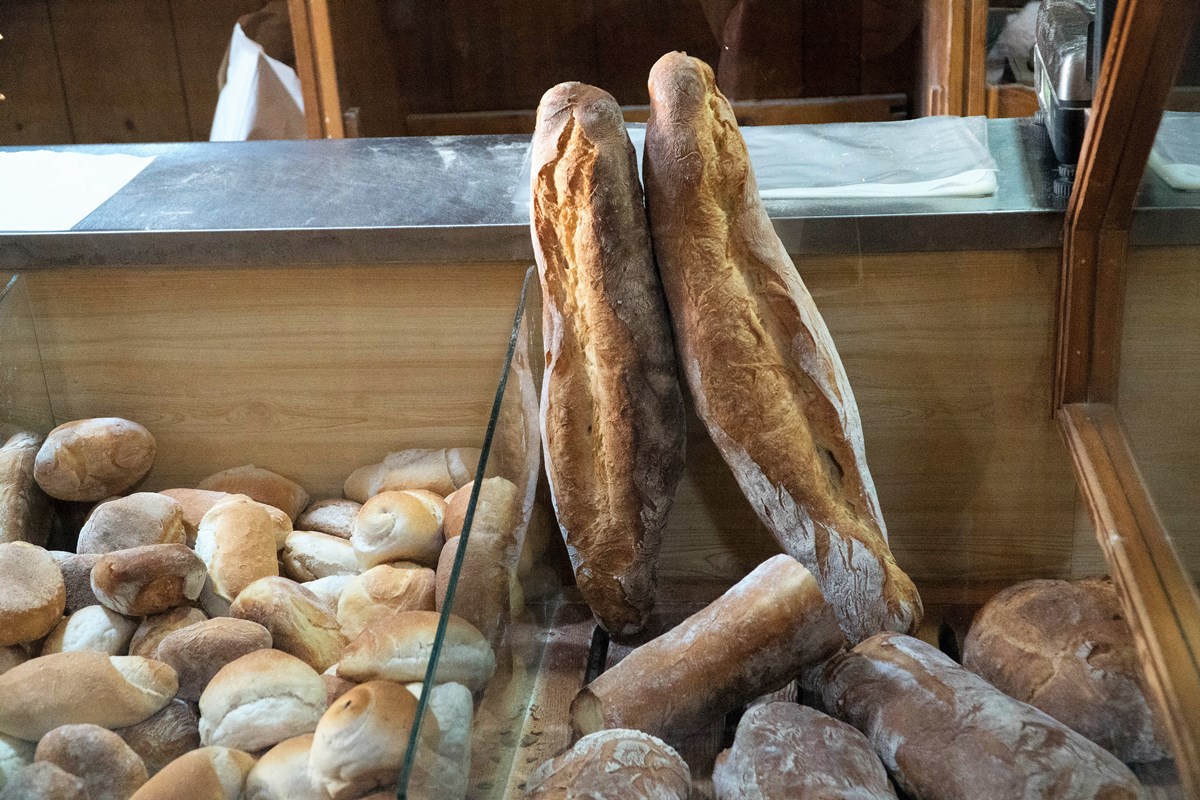
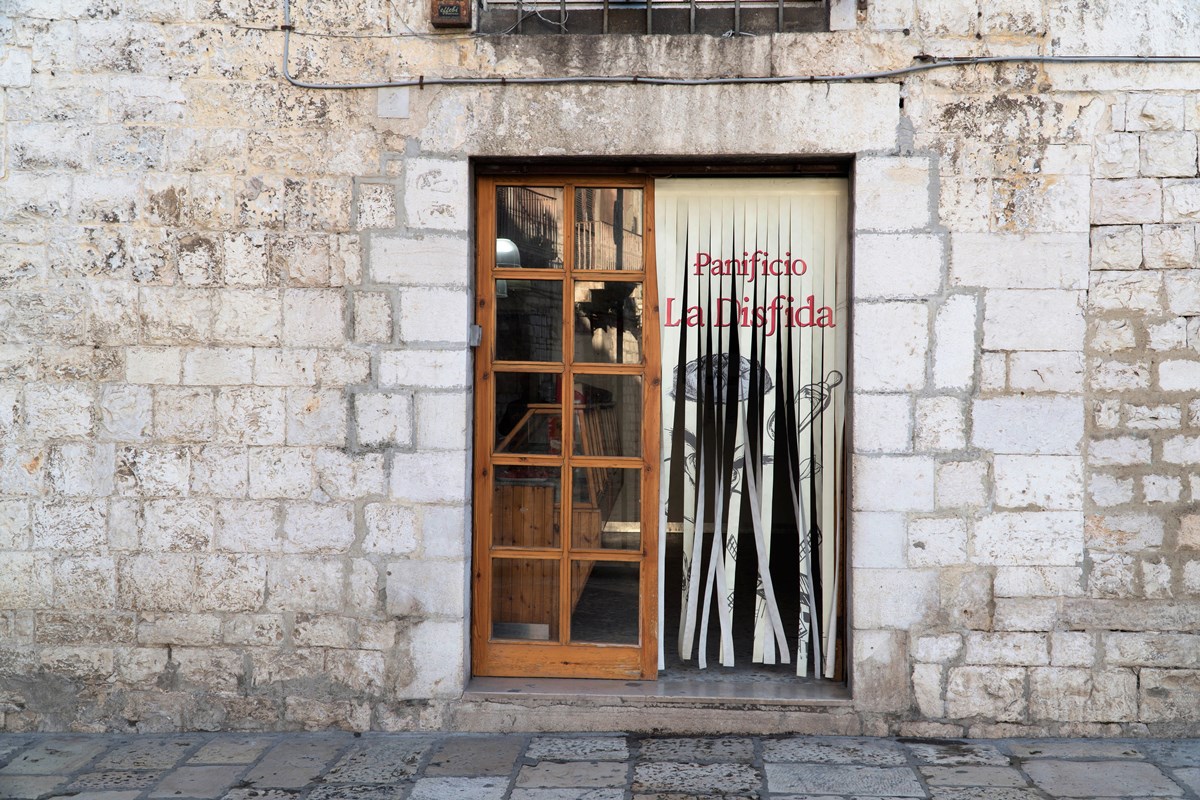
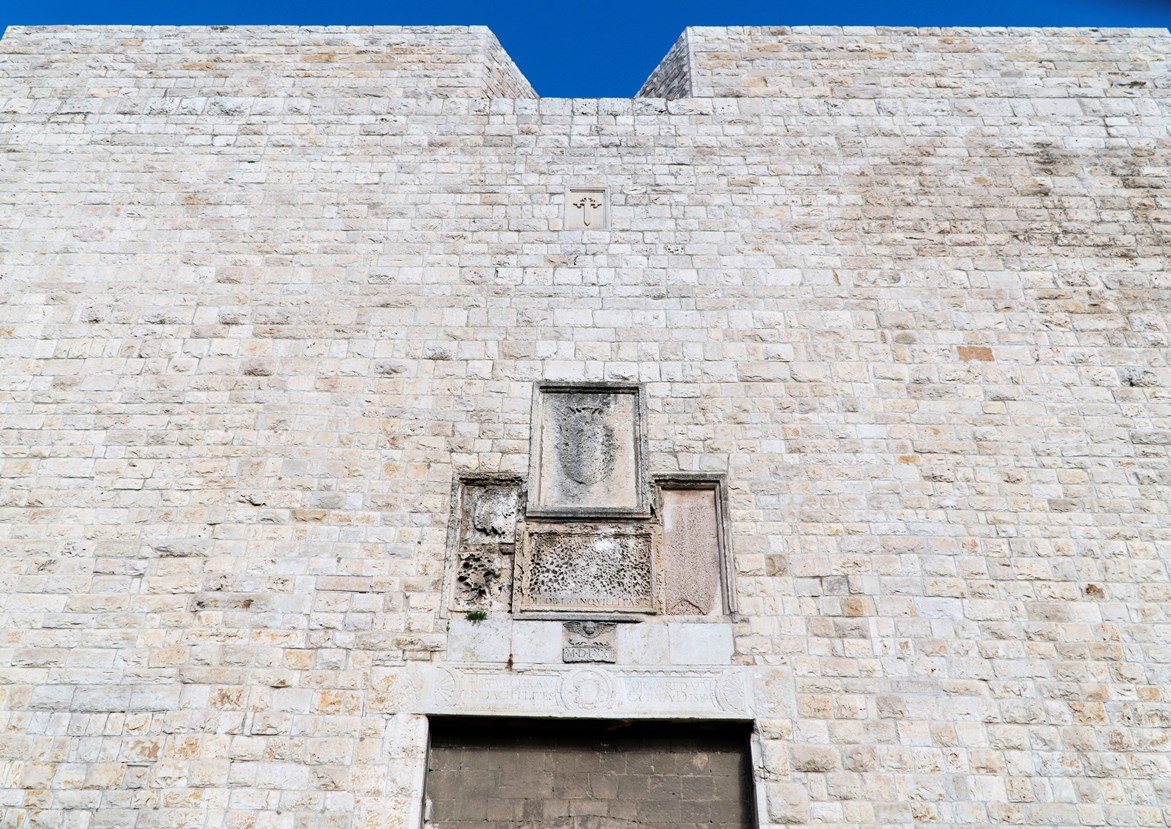
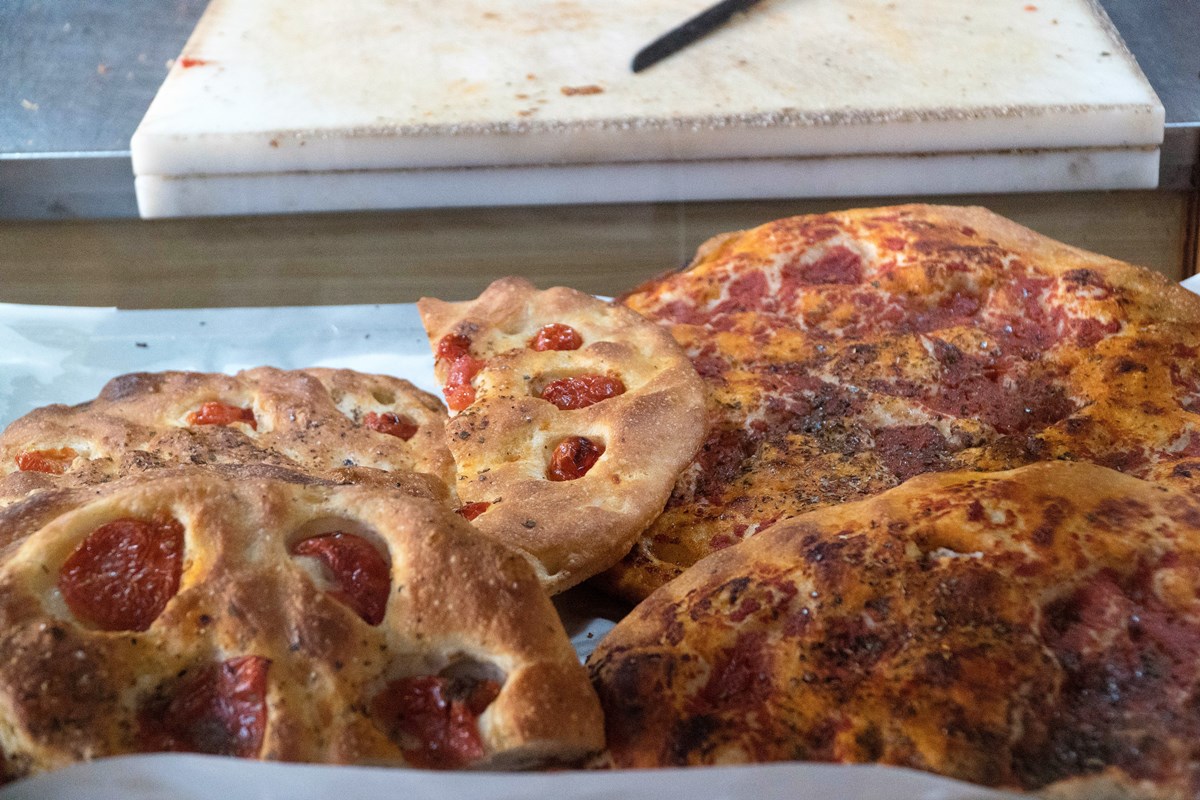
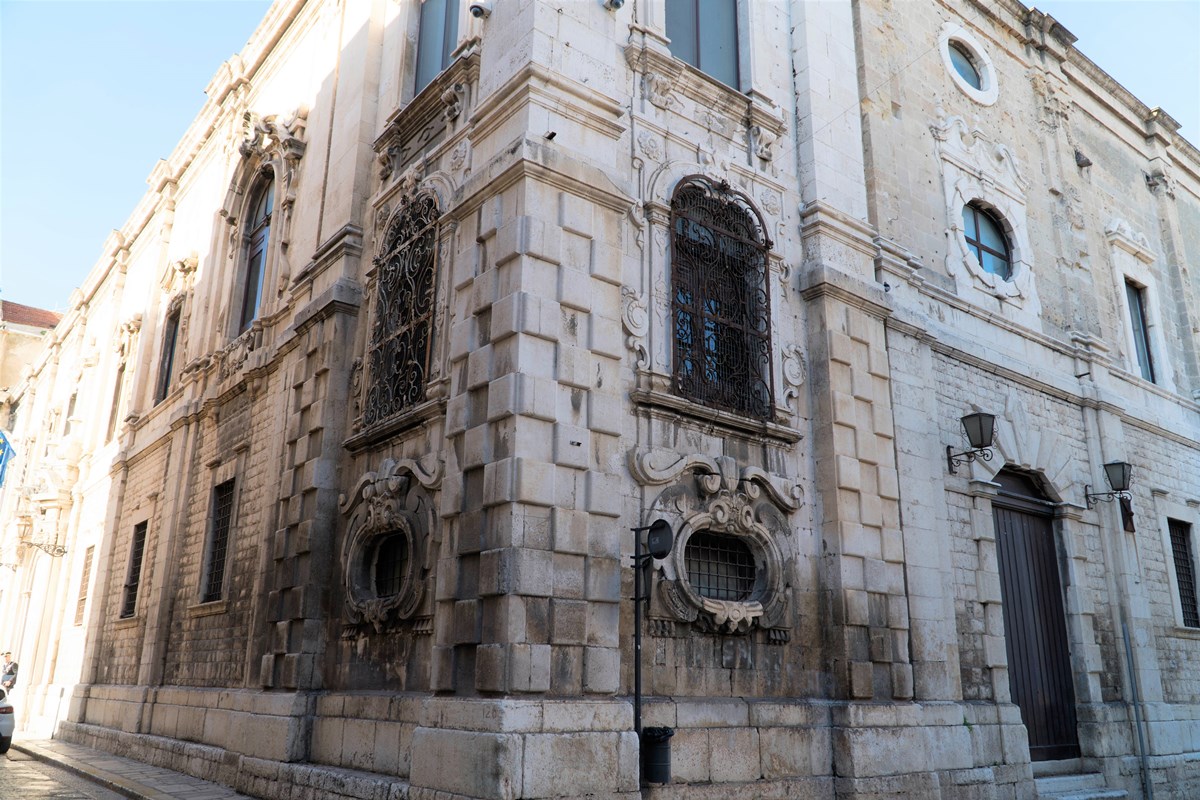
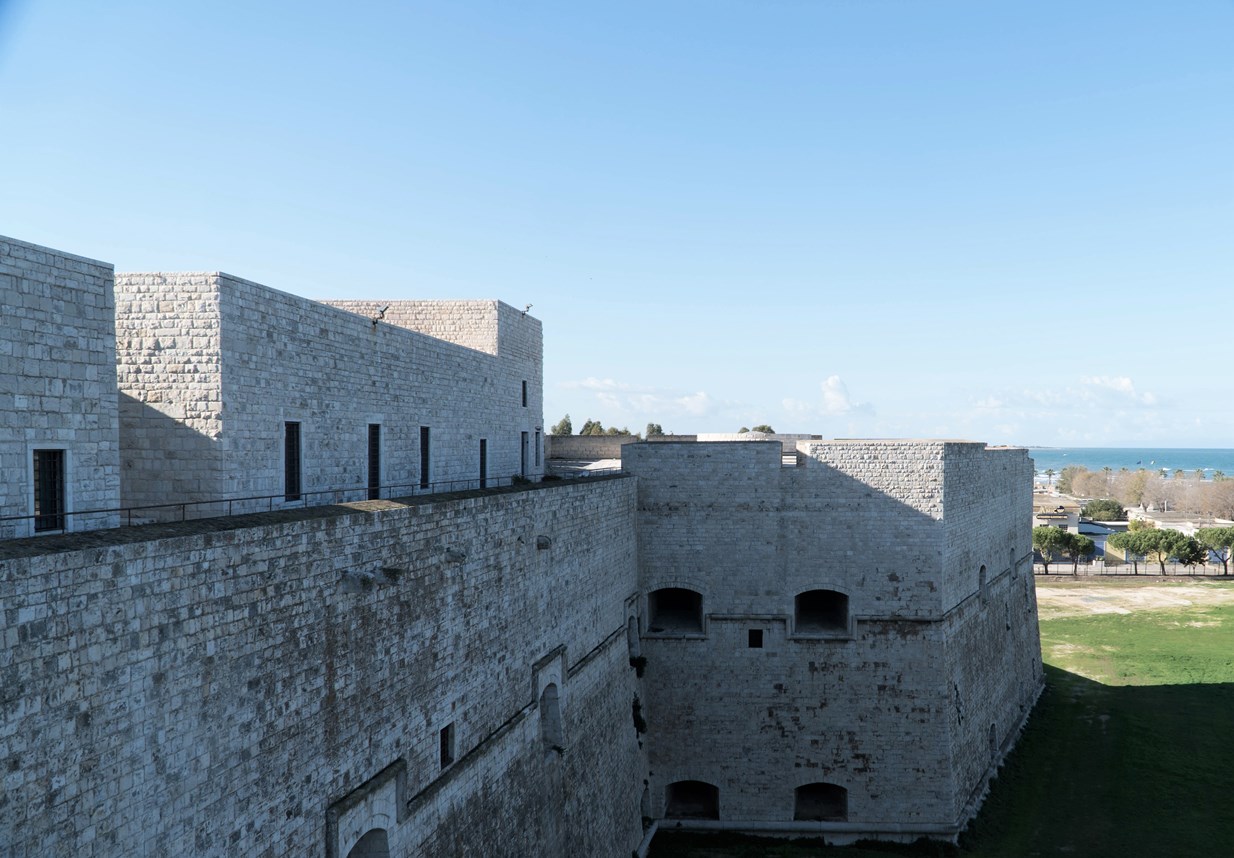

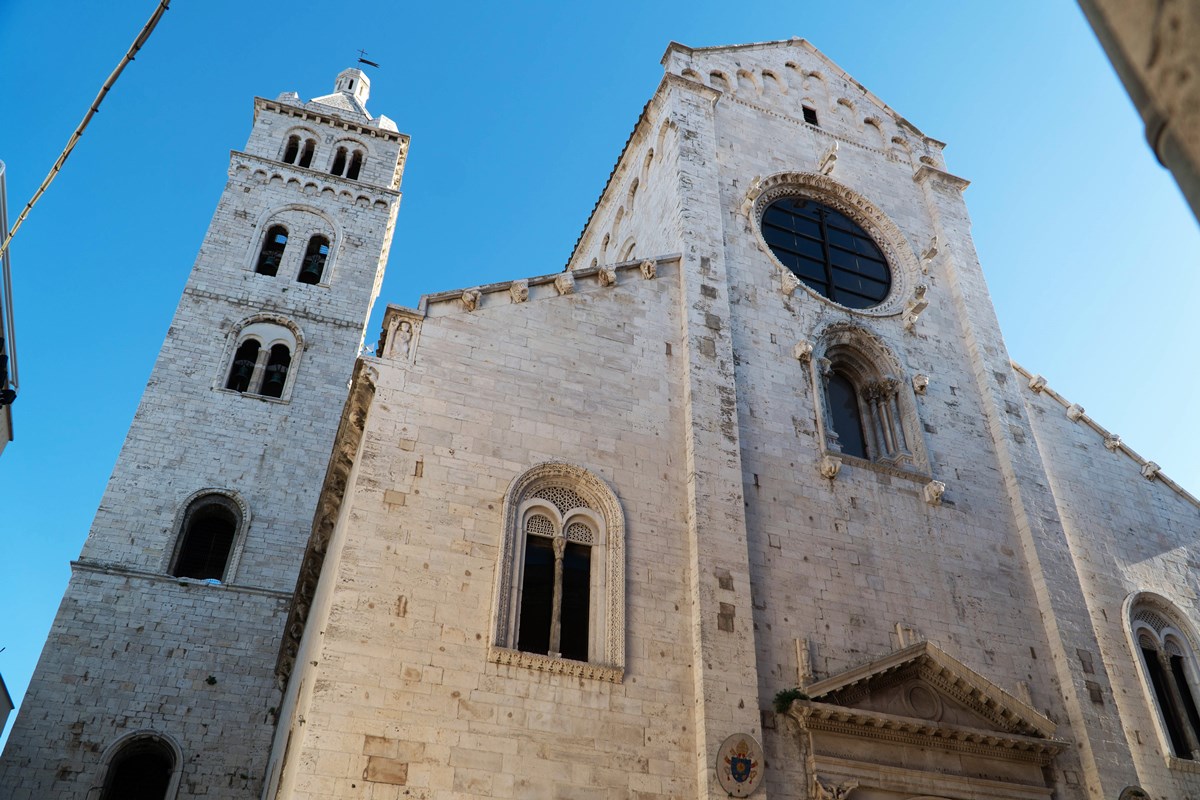
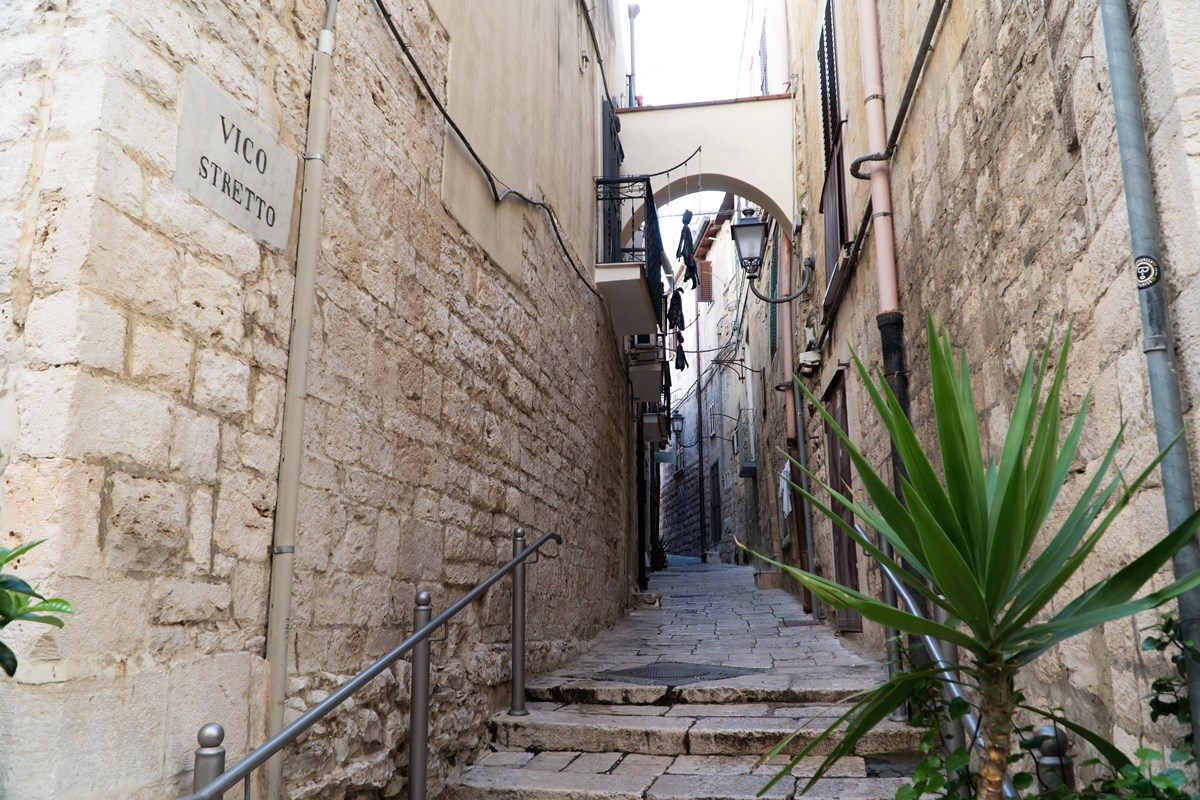
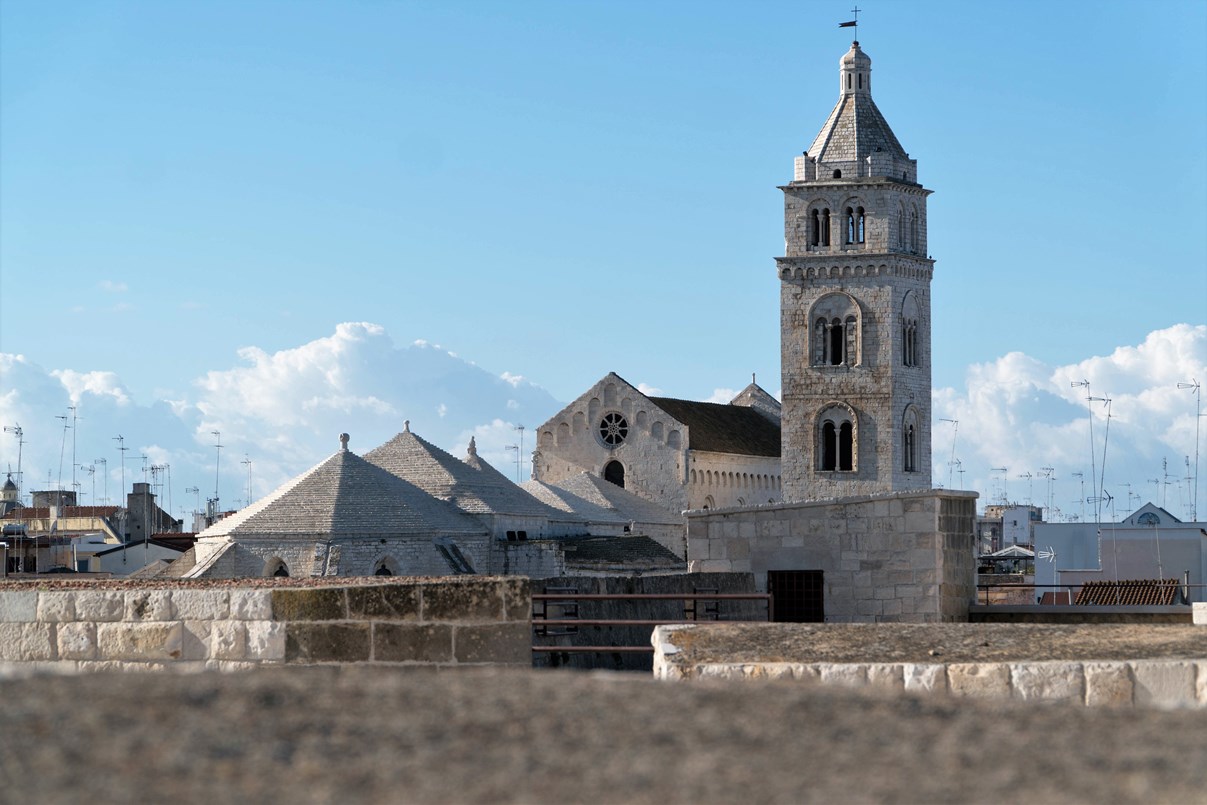
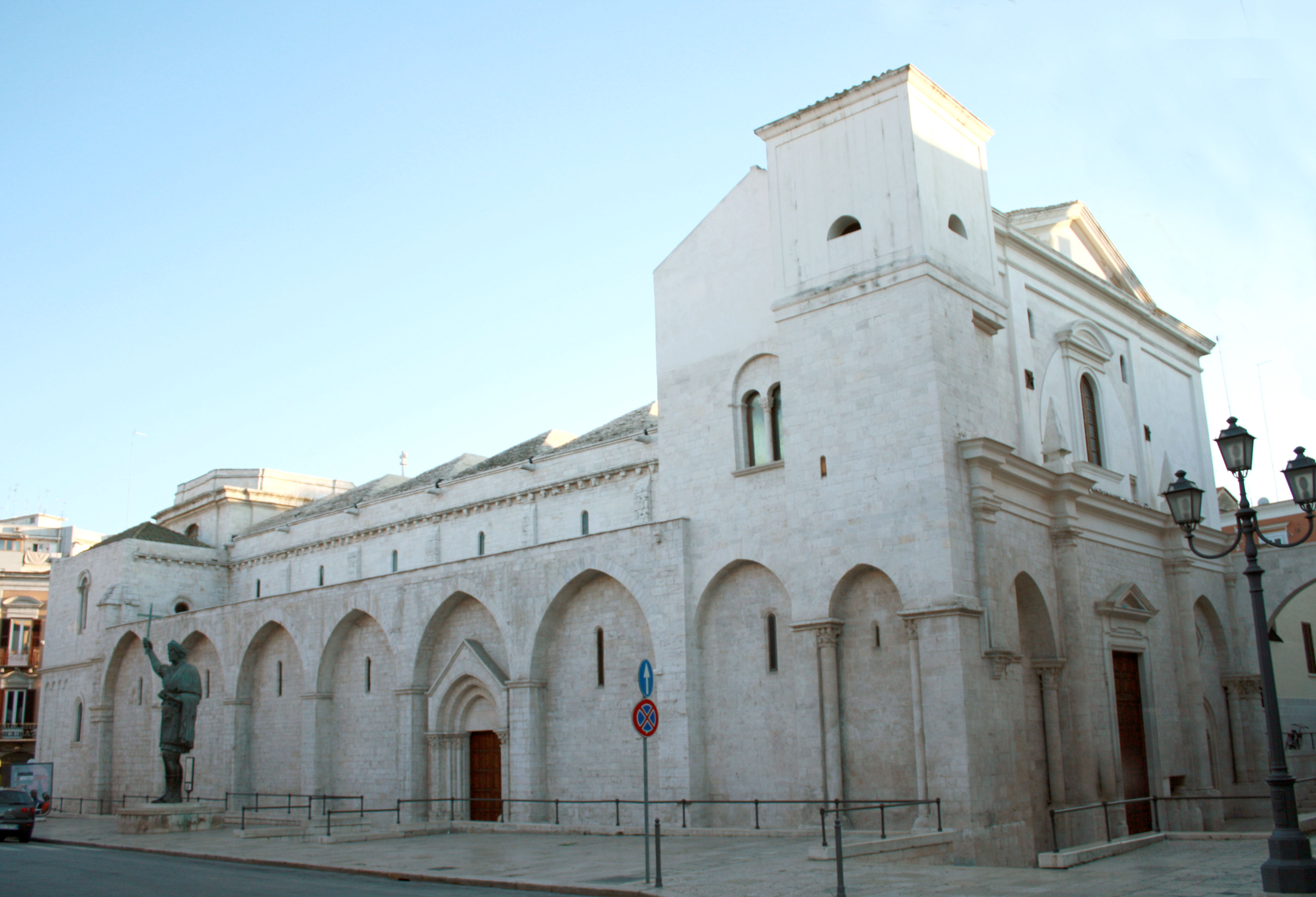
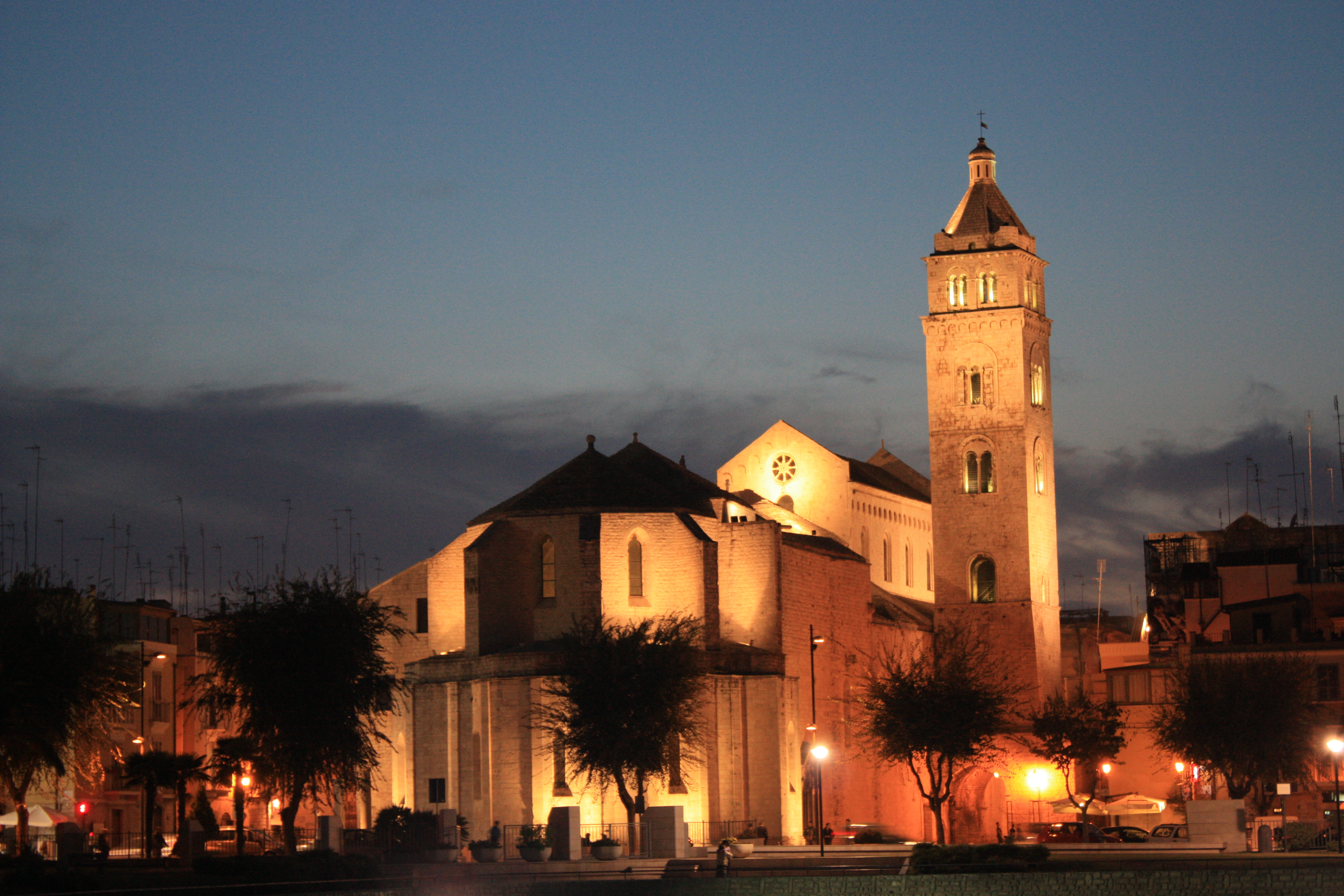
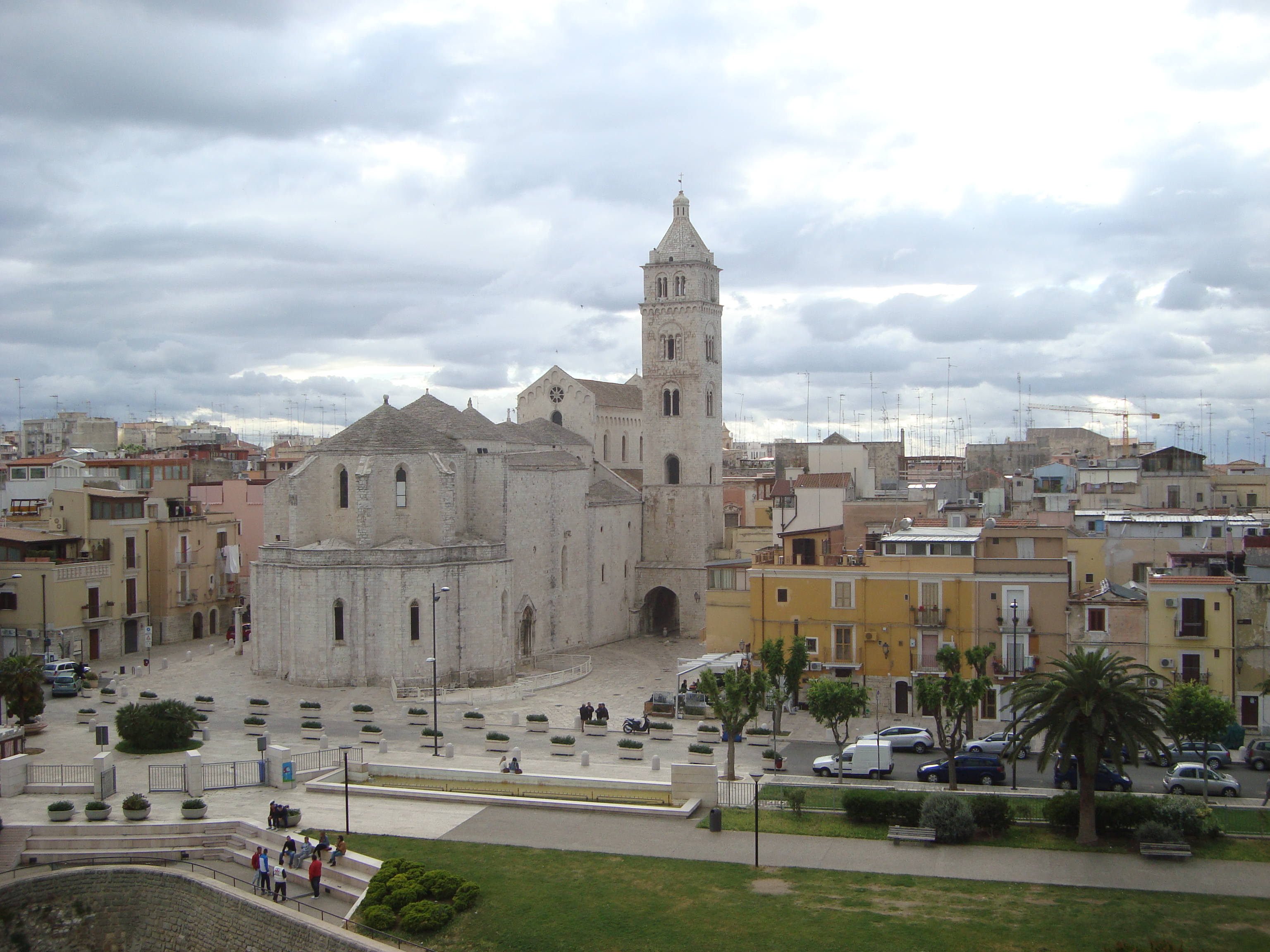


















History
The vicinity to both the Adriatic Sea and the Ofanto river, as well as the pleasant conditions of the territory, have made this area a popular place to live since ancient times. One of Barletta’s nearby hamlets, Canne, is famous for its role in ancient history: it was the site of an important battle between Hannibal’s army and the Roman forces, who were subjected to a crushing defeat.
In the Middle Ages, Barletta underwent extensive development due to the strategic position of its port, which offered the perfect departure point to easily reach the Holy Land. Thanks to the constant sea traffic of the Crusaders and merchants travelling East, the fame and fortune of this city was guaranteed.
Even in Puglia’s darkest hours, the presence of prestigious banks and the constant flux of trade and commerce guaranteed prosperity for Barletta, which brought the borgo to the attention of the Emperor Federico II, who chose the Castle of Barletta as one of his homes.
Recent history has also left its mark on Barletta: during the Second World War, it was the stage for a battle between French and Italian soldiers, an event which city still recalls with pride.
With the passing of time, even Barletta was inevitably touched by decline, caused by an epidemic of the Plague which decimated the population, leaving the crippled city to struggle forward for two long centuries.
Barletta finally found its redemption during the two World Wars, where it participated with great courage and valor. In gratitude for its heroic efforts, Barletta was awarded 11 Gold medals, 215 Silver Medals and the Civil Medal of Valor, making it the most heroically recognized city in Italy.
After the Second World War, Barletta took on a new challenge, to break free from the influence of nearby Bari and become an autonomous province. The population’s wish was finally granted in 2004, when the city became a new joint province, together with the cities of Andria and Trani, now known as “B.A.T.”.
Canne della Battaglia
Canne della Battaglia is one of the most important historical sites of Puglia, set high on a hill overlooking the cities of Barletta, Canosa and Margherita di Savoia.
This location was inhabited by human civilizations from 5000 B.C. until the Medieval period. Testimony of its ancient and glorious history can be found inside the Antiquarium, which safeguards important artifacts and relics left by all the populations who came here from afar, such as the Dauni, the Greeks and the Romans.
After the Antiquariam ,a long tree-lined lane leads to the archeological site of the ancient city of Canne, set graciously on hill. You will find yourself in a place where time has stood still, where it is easy to imagine what life must have been like in the Middle Ages, animated by the busy lives of workers and merchants, full of workshops and storehouses for the conservation of fish and meat.
The most important site is the ancient Cathedral, a Paleo-Christian Basilica with two levels, where you can admire the finely sculpted capitals and ornamental decorations. Today, for the most part what can be seen is the Medieval city of Canne, with an urban imprint dating back to that period, but the entire town was built over a city dating back to the Roman era, with the Roman urban plan still in place underneath, as can be seen by the two main avenues intersected by minor streets. The numerous periods of destruction and reconstruction of the city have covered layer upon layer of historical evidence, and the area of the archeological digs has not been analyzed exhaustively, meaning that many more secrets could still be discovered in this archeological treasure trove. In fact, the latest archeological digs have recently unearthed a Roman domus.
The Medieval town of Canne was subjected to a tragic decline after the last brutal attack by Roberto il Guiscardo’s Norman troops in the year 1083, which marked the inexorable destiny of this once flourishing city.
The Castle of Barletta, Federico II, Julius Caesar and the others
The Castle of Barletta was constructed in the Norman period, at an unconfirmed date. It was then inhabited by the Swabians and the Emperor Federico II. With the arrival of Charles the V and the Angevins, the structure underwent numerous remodeling interventions, bringing the Castle to the final version we see today.
The castle has retained the austere aspect of a military fortress, surrounded by the sea and a deep moat to ward off intruders. It has a simple, symmetrical form, with four imposing diamond shaped bastions. The most interesting aspects of the castle are the subterranean vaults and the museum, which has galleries organized by epochs and testimonial themes. You can visit the Ancient Gallery, the Eighteenth Century Gallery, the Cafiero Gallery, and a collection of tombstones and funeral relics.
Of all the objects in the museum, the key attraction for visitors is a controversial limestone bust, which is still the subject of studies and university theses. It is a depiction of a man in Roman garb, which is commonly believed to be the Emperor Federico II, while the analyses and in-depth studies support the hypothesis that it is a depiction of Julius Caesar. The dispute is fueled by the fact that the Swabian Emperor Federico enjoyed having himself portrayed in the garb of a Roman emperor, complete with laurel crown, while the fact that the epigraph below the bust is illegible keeps the debate open. The population of Barletta stands firm in their belief, and in any case, if the bust is indeed Federico II, Barletta would be only city in Puglia to have a sculpted portrait of the Puer Apulia (the “Son of Puglia”, an endearing knick-name given to this Sicilian ruler of German descent who had a deep love for the region).
The Cathedral of Barletta
As you walk along the streets of the historical center, you suddenly come upon the Cathedral of Barletta, and find yourself delighted and amazed by its unexpected majesty: a simple and austere architectural triumph created by the perfect blend of Romanic and Gothic styles.
The imposing bell tower dominates the entire construction, while the façade is decorated with only a Renaissance entrance portal and a central rose window.
When the Gothic influences were added, the Cathedral was enhanced by trapezoid shaped asps, which grace the exterior with a delicate back prospectus. Of particular interest are the sculptures at the entrance to the Sacristy, which are considered as being the first examples of Apulian figurative art, dating back to the twelfth century.
The existing cathedral is built over two pre-existing structures, recently discovered in the latest archeological digs.
Inside the crypt of the cathedral, you can visit the original paleo-Christian basilica, with its original mosaic floors and geometric decorative designs.
This early Christian church was abandoned for a long period of time, and later, in the Middle Ages, a smaller structure was built in the same location.
The Basilica of Santo Sepolcro and the Pilgrims’ Treasure
Barletta was always the land of pilgrims and merchants, coming and going to and from the East, heading, above all, for Palestine, the Holy Land. The fact that its port was in such a convenient position for this destination guaranteed the city’s affluence for centuries. The travelers and the Crusaders passing through Barletta never set sail without a final prayer in the Basilica del Santo Sepolcro. In an era when sea voyages were taken in ships that were robust but not necessarily safe, even the most courageous at heart feared setting off for unknown horizons. Countless nervous travelers, consumed by a sense of foreboding augmented by the fear of bad omens, left their most valuable possessions in this Basilica, hoping to shift their destiny by making a substantial offering to God. This bounty became “il tesoro dei pellegrini”, the Pilgrims’ Treasure.
Today, possessions of inestimable worth are safeguarded within the walls of this sacred place. In the chapel above the narthex, there are manuscripts documenting the gift of properties, houses, and land, as well as valuable objects and precious jewelry, often originating from the Holy Land, and then transormed into adornments by French artisans. Two of these ornaments are particularly valuable and rare: the first is the Dove of the Eucharist, dating back to 1184, made in copper with the ancient technique of champlevé. The second is a stauroteca in the shape of a cross (an object of worship containing fragments of Christ’s cross), which was brought to Barletta by the King of Jerusalem in 1291.
Palazzo della Marra, the De Nittis Gallery
In the territory around Bari, the only example of Baroque style in civil architecture is found in Barletta: the marvelous Palazzo della Marra. This historical building reflects the style used in the Basilica Santa Croce in Lecce, with use of the soft, golden Lecce stone and the abundant use of sculpted garlands, fruit and floral motifs entwined with the name of the owner of the home.
After undergoing restoration, the Palazzo della Marra opened its doors to host a collection of paintings by the renowned painter, Giuseppe De Nittis.
Born in Barletta, Giuseppe De Nittis was an impressionist of international fame, and his wife donated a collection of his paintings to the city in 1884. Initially, they were exhibited in the ex-Convent of San Domenico, and later in the rooms of the castle, but unfortunately the close vicinity to the sea risked causing irremediable damage to the paintings, and so they were moved to Palazzo della Marra. The collection represents a panorama of the life of the Apulian painter, revealing key moments of his existence and his principle inspirations: the splendid landscapes overlooking Vesuvio, the cities of London and Paris, and also his muses, one of whom is his wife, Lèontine.
Eraclio, the mischievous Colossus
For over five hundred years, an enormous emperor from the East has watched over Barletta and its people. An imposing five meters tall, this colossus is known all over the city and is considered an integral part of the community. A model citizen, as such.
This bronze statue represents a Roman emperor, but as his original identity remains a mystery, he is known in Barletta as Eraclio. It is said that the Colossus originated in Constantinople and was on its way to Venice, but the ship transporting it was shipwrecked in a storm, and so the statue reached the coast of Puglia. For a long time it remained abandoned at the docks of the port, until in 1491, a Neapolitan sculptor remade its arms and legs and it was carried on the shoulders of the villagers to be positioned near the Church of Santo Sepolcro.
Eraclio has faithfully accompanied generation after generation of the people of Barletta, as have the myths and stories about him. Legend has it that long ago, the people of Barletta were in a state of panic because they had sighted French soldiers approaching the city. There weren’t enough men or supplies to face the foreign army, and the entire city was in a state of anguished desperation, people’s wails filling the streets as they prepared for the worst. At a certain point, the Colossus got down from his pedestal and asked the inhabitants why they were in such a desperate panic. After hearing about their plight, Eraclio went outside of the city walls, rubbed an onion into his eyes and sat down on a rock to wait for the arrival of the soldiers.
The French army arrived at the gates of Barletta to find an enormous bronze giant, in tears. The statue confided to the troops that he was the smallest inhabitant of the city, and also the most mischievous, and that today, not only had he played hooky from school, but he had lost all the buttons of his coat while gambling. When his mother came home and discovered what he had done, she spanked him and sent him outside the city walls as punishment.
Imagine the shocked expressions of those poor soldiers! Completely unnerved, they turned right around and headed back to where they had come from, never to return.
The Challenge of Challenges
In Barletta, when it comes to challenges, forget about soccer, football or the World Cup. In Barletta, there is only one Challenge, and it happened over five hundred years ago, in 1503, on the 13th of February to be exact. A group of Spanish, French and Italian soldiers were carousing in a pub, laughing and ribbing each other to the chiming clinks of beer mugs. For the entire night, the Spaniards had been showering compliments on the Italian troops. This grew increasingly intolerable to the French soldiers, who finally challenged them to battle to defend their pride. Unfortunately for the French, the whole episode was a trap set up by the Spanish troops to finish them off, and the French troops lost both the battle and their honor.
There is a memorial plaque in Barletta in commemoration of this historical episode, which remains fresh in the minds of the population even today. To honor the victory, the ground floor of a Medieval palace has been transformed into the “Cantina della Disfida (Challenge), furnished and decorated in the period of the 1500’s. Every September, the city relives the victory, with crowds of people in period dress and professional actors reenacting the glorious battle. It is an unforgettable event, rendered especially powerful by the narrative voices that accompany the parade and the battle, all the way to the final outcome, which is always the same, as it will be for years to come.
Pietro Mennea, the Pride of Italy
Pietro Mennea is a name that still beats strong in the heart of sports, the heart of Italy, and most of all in the heart of Barletta, the city he was born in on June 28, 1952.
His extraordinary athletic gifts were evident from the time he was a young boy, so exceptional that, as he was running through the streets of the old city on an errand, he was seen by an important athletic coach, Francesco Mascolo, who understood immediately that he had found a professional sprinter.
As a boy, Pietro Mennea was already a legend in Barletta, because he would run races against cars and always come out the winner, whether it was an Alfa Romeo or a Ferrari.
He was nineteen years old when he burst onto the scene of professional track and field in 1971, competing in the Mediterranean Games, and the European Championship, where he came in sixth in the 200 meters race and won a bronze medal for the 4×100 relay.
It was just the beginning.
Eight years and several gold medals later, Pietro Mennea participated in the “Universiadi di Città del Messico”, where he ran the 200 meter low altitude race at 2000 ft, in difficult conditions, in 19.62 seconds, breaking a record that no one would surpass for seventeen years.
His technique of starting slow and progressively accelerating made him even more successful in the 200 meters than in the 100 meter races: he was the Italian Champion for the 100 meter race three times, and Italian Champion of the 200 meter race eleven times.
But Pietro Mennea was not only an athlete, before anything else, he was a man whose generosity and humanity won the hearts of everyone. He was a an extraordinary hero who never lost the simplicity of his origins. He began every race with the sign of the cross, knowing full well that the television cameras were waiting for that simple, ancient gesture, a ritual of the south of Italy, his south.
He was a great athlete with a vibrant, active mind, whose passion for his studies led him to take degrees in Political Science, Law, Literature, and Physical Education.
In 1988, he withdrew from the Olympics in Seul, but not from his activities: he wrote more than twenty books, he became a lawyer, a tax, consultant, He managed the Salerno Football team in the 1998-99 season, and was a professor of ‘European Legislation for Sport and Physical Education’ at the University ‘G. D’Annunzio in Chieti.
From 1999 to 2004 he was a deputy of the European Parliament, and in 2006, he and his wife founded the “Fondazione Pietro Mennea” a non-profit organization dedicated to social assistance programs and fund-raising.
In 2013, he passed away after a serious illness, but Italy’s love for him lives on as strong as ever. In 2015, the RAI television group dedicated a TV series to him entitled “La freccia del sud” (The Arrow of the South), interpreted magnificently by the gifted actor Michele Riondino (find it with subtitles, it’s not to be missed!), and in 2017 the “Comitato Olimpico Nazionale Italiana (Italian National Olympics Committee) restored the track in the ‘Putilli’ Stadium in Barletta. At the inauguration ceremony, in the presence of the Minister of Sport, Mrs. Emanuela Olivieri Mennea, as well as numerous representatives of important institutions, a plaque dedicated to Pietro Mennea was unveiled, to honor the athlete and the man who will never be forgotten.
Giuseppe De Nittis
Giuseppe De Nittis was born in Barletta in 1846, but he soon left the Apulian city for Paris, and then London to follow his career as a painter. He was the only Italian artist to be included in the first exhibition of Impressionist Art. His key artistic themes were landscapes, urban scenarios and the celebration of female beauty. His most famous work is “La colazione in giardino” (Breakfast in the garden), which encapsulates the essence of Impressionism, expressed as an artistic movement depicting what the painter sees in a specific moment, utilizing an almost photographic approach.
A close friend of Degas and Monet, he died prematurely at the age of thirty-eight. His wife Leontine donated a portion of her husband’s work to the city of Barletta, where it is currently on exhibition in the “Pinacoteca De Nittis” founded in 2007, inside the Palazzo della Marra.
La Colva di Barletta
“La Colva di Barletta” is a delicious traditional sweet prepared for the “giorni dei morti” (the days of the dead) celebrated every year at the beginning of November. It is prepared with harvest fruit, dried fruit, nuts and dark chocolate.
Ingredients:
- 500gr of millet;
- 150gr of shelled walnuts;
- 150gr of almonds;
- 150gr of hazelnuts
- 150gr of dried figs;
- 200gr of dark chocolate;
- 2 fresh pomegranates;
- Raisins;
- Rum;
Preparation:
Soak the millet in water for two days, on the 1st of November, cook it in boiling water and leave it in the water once it is cooked. Soak the raisins in water and rum for ten minutes, then drain.
Toast the almonds and finely chop them together with the walnuts and the hazelnuts. Break the dark chocolate into tiny chunks, and peel the pomegranates to obtain the seeds, or kernels. Cut the dried figs into four sections. Once all the ingredients are prepared, drain the millet, and mix it all together with the nuts, fruit and chocolate. It can be accompanied by vincotto.

 Italiano
Italiano
 Deutsch
Deutsch

